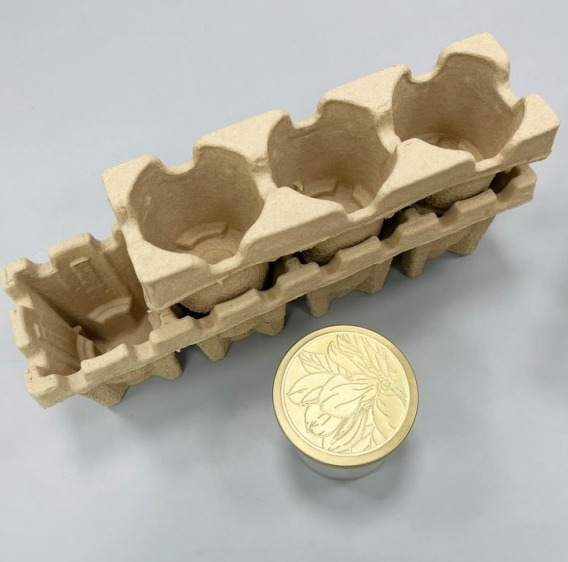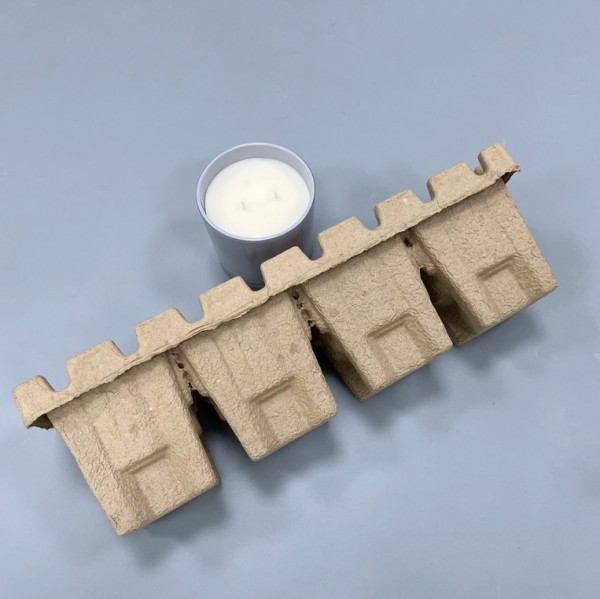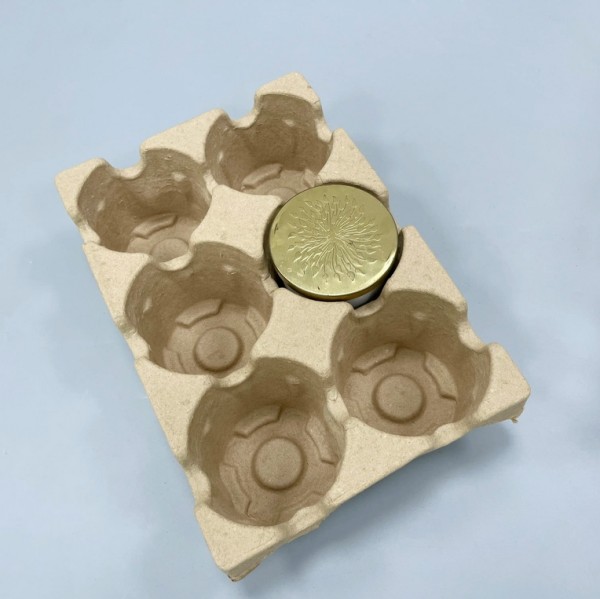As businesses increasingly prioritize sustainability, custom paper pulp trays have emerged as a highly favored packaging solution. Their eco-friendliness, versatility, and recyclability make them an ideal choice across various industries such as electronics, cosmetics, and food. However, the design process for these trays—whether they are custom wet press molded pulp inner trays or dry press paper pulp trays—requires careful attention to several important factors. Let’s explore the key considerations in designing high-quality custom pulp trays.
1. Material Selection and Quality
The materials used in custom paper pulp trays are primarily natural fibers, often derived from recycled paper or cardboard. The selection of high-quality raw materials ensures durability and reliability, particularly for custom wet press molded pulp inner trays that require a smooth finish and higher strength. The ability to balance strength with sustainability is critical, especially when creating trays for delicate or high-value products. For applications that demand both protection and a minimal environmental footprint, sourcing sustainable wet press moulded pulp inner trays is essential.
2. Mold Precision and Design
Precision in mold design is key to achieving both the aesthetic and functional goals of the packaging. Wet press molded pulp inner trays typically require molds with finer details and smoother surfaces to create premium products. This is especially important for industries where presentation is key, such as in electronics or cosmetics packaging. For dry press paper pulp tray suppliers, the focus is often on efficient mold use and cost control, balancing aesthetic appeal with functional requirements like stackability and protection.
3. Structural Integrity and Load-Bearing Capacity
When designing a custom paper pulp tray, it's essential to consider the load-bearing capacity of the packaging. Depending on the product's weight and fragility, the tray should be designed to offer adequate support and protection. This is particularly relevant for custom wet press molded pulp inner trays, which often package fragile products and need to withstand external pressures during storage and transportation. Additionally, the structure should be optimized for stacking, ensuring that trays can be efficiently packed without risk of damage.

4. Moisture Resistance and Protection
Given that custom paper pulp trays are often used for packaging food, cosmetics, or electronics, ensuring adequate moisture resistance is a key factor. For sustainable wet press moulded pulp inner trays, additional coatings or treatments can be applied to enhance water resistance without compromising the eco-friendly nature of the packaging. Designers must consider both the product's moisture sensitivity and the intended storage conditions when planning for protection against humidity or accidental water exposure.

5. Aesthetic Appeal and Branding
While functionality is crucial, the visual appeal of a custom paper pulp tray also plays a significant role, particularly in consumer-driven industries. The ability to create aesthetically pleasing trays that align with a brand's image can impact customer perception and purchasing decisions. For instance, wet press molded pulp trays tend to offer a sleeker, more refined look compared to dry press options, making them ideal for luxury brands that prioritize both sustainability and style.
6. Sustainability and Environmental Impact
In today’s market, the sustainability of packaging materials is a key selling point. Sustainable wet press moulded pulp inner trays are designed to minimize environmental impact by using biodegradable, compostable materials. Companies should focus on minimizing material waste during the production process while ensuring that the packaging is fully recyclable. This approach helps brands meet the growing demand for eco-friendly packaging solutions while enhancing their environmental credentials.

7. Cost Efficiency and Production Scalability
Finally, balancing cost efficiency with design complexity is critical in pulp tray production. While wet press molded pulp trays generally require more intricate molds and have higher production costs, dry press paper pulp tray suppliers offer more economical solutions for mass production. Designers should focus on optimizing the process to reduce costs without compromising quality, allowing for scalability and long-term cost benefits.
Designing high-quality custom paper pulp trays involves careful consideration of material selection, mold design, structural integrity, and sustainability. By addressing these key factors, companies can create packaging solutions like custom wet press molded pulp inner trays or sustainable wet press moulded pulp inner trays that not only protect their products but also appeal to environmentally conscious consumers. Through thoughtful design and collaboration with dry press paper pulp tray suppliers, businesses can enhance both the functionality and eco-friendliness of their packaging, ensuring success in today’s competitive market.

